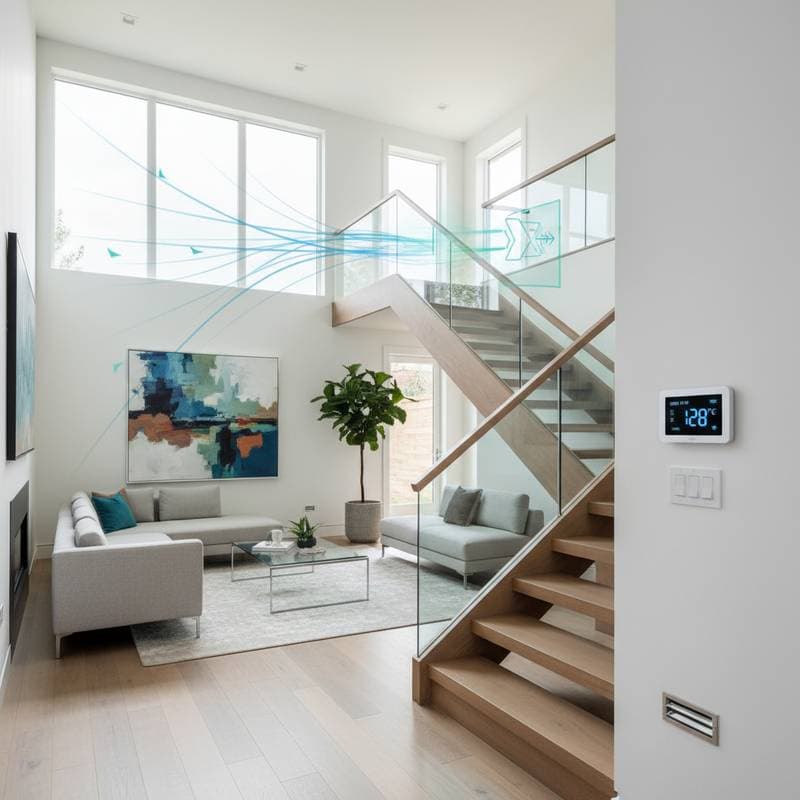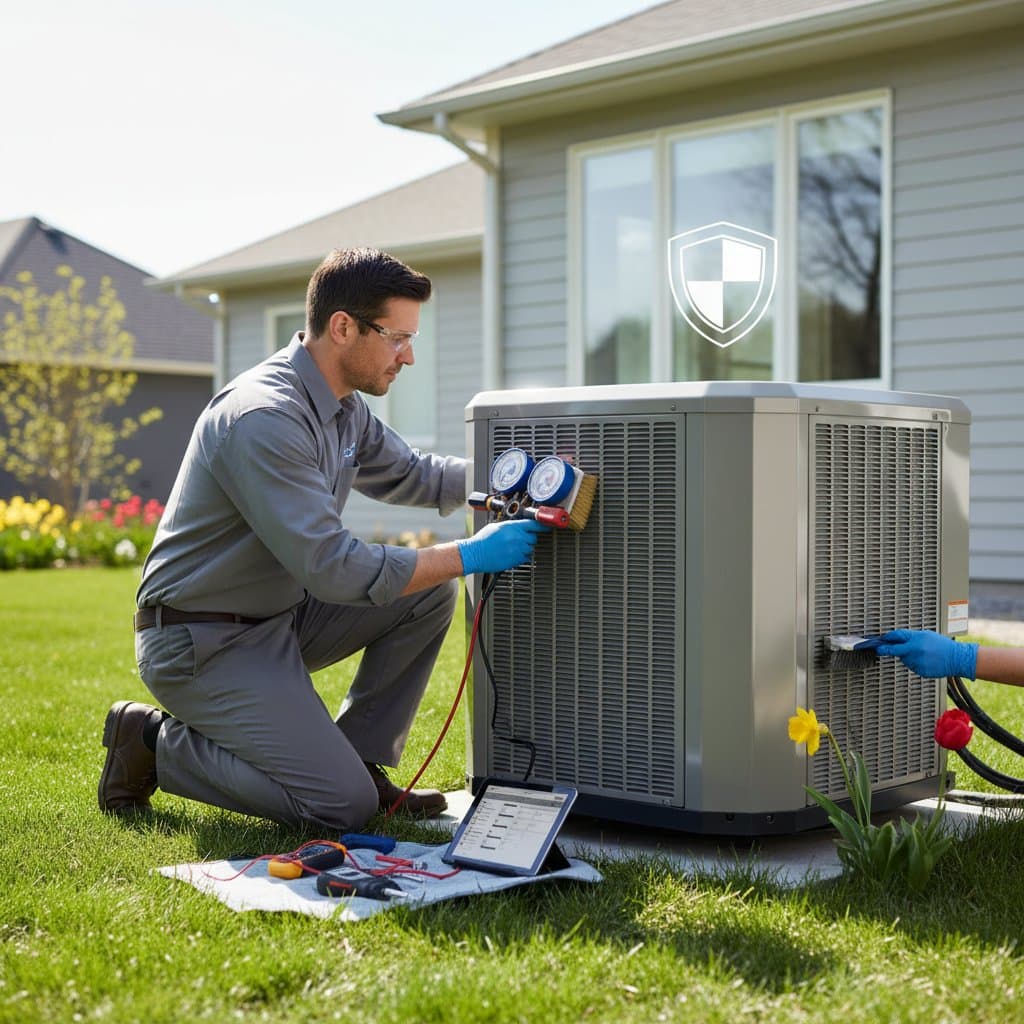How HVAC Zoning Systems Reduce Energy Bills by Up to 35% with Precise Room Control
Do you experience hot and cold spots in different rooms? Do family members frequently argue over thermostat settings? Are unused rooms heated or cooled without necessity? Do high energy bills arrive without an obvious explanation? In a multi-story home, are upper floors consistently warmer?
If these issues resonate, an HVAC zoning system offers a solution. This technology divides your home into distinct zones, each with independent temperature control. As a result, your heating and ventilation system operates more efficiently, enhancing comfort throughout the residence.
Types of HVAC Zoning Systems
HVAC zoning systems fall into two primary categories. The selection depends on your existing equipment, ductwork configuration, and home characteristics.
Ducted Zoning Systems
Ducted systems leverage your current ductwork. Technicians install motorized dampers within the ducts to regulate airflow to specific zones. This approach suits larger homes equipped with central HVAC units. Customization options include multiple thermostats, enabling precise adjustments for various areas.
Ductless Mini-Split Zoning Systems
Ductless systems employ individual indoor air handlers for each zone, all linked to one outdoor compressor unit. Each handler features its own thermostat for independent operation. These systems excel in older homes lacking ductwork or in room additions where duct extension proves impractical.
A qualified professional evaluates your setup to recommend the optimal system, ensuring seamless integration and performance.
Key Benefits of HVAC Zoning
HVAC zoning delivers multiple advantages that extend beyond basic comfort.
- Energy Savings: Conditioning only occupied spaces reduces overall energy consumption by as much as 35 percent.
- Enhanced Comfort: Family members maintain their ideal temperatures without compromising others.
- Extended Equipment Lifespan: Less continuous operation minimizes wear, leading to fewer repairs and prolonged durability.
- Superior Indoor Air Quality: Directed airflow promotes better circulation, which diminishes dust accumulation and allergen exposure.
- Smart Home Compatibility: Integration with intelligent thermostats permits remote monitoring and adjustments via mobile devices.
These benefits translate to a more efficient and enjoyable living environment.
Factors Influencing HVAC Zoning System Costs
Installation expenses for HVAC zoning systems fluctuate based on several elements. National averages span from several hundred dollars for basic configurations to thousands for extensive setups in larger properties. Consider these variables when budgeting:
- Number of Zones: Additional zones necessitate more thermostats, dampers, and associated wiring.
- System Type: Ducted installations prove more economical if ductwork remains in excellent condition; ductless options carry higher initial costs yet offer greater adaptability.
- Home Size and Layout: Expansive or multi-level residences demand extra components for comprehensive coverage.
- Equipment Compatibility: Legacy HVAC units might require modifications to accommodate zoning features.
- Labor and Installation Fees: Expert labor guarantees accurate setup, which impacts long-term efficiency.
Obtain estimates from multiple licensed contractors specializing in zoning to secure competitive pricing and reliable service.
DIY Approaches Versus Professional Installation
While DIY projects appeal for certain home improvements, HVAC zoning demands professional expertise. Improper execution risks inefficiency and potential hazards.
Safe DIY Tasks
Homeowners can perform minor maintenance, such as calibrating thermostat preferences, sealing observable duct gaps with appropriate materials, or clearing debris from vents. These steps modestly enhance airflow and sustain system performance.
Tasks Requiring Professional Intervention
Professionals handle damper placement, thermostat wiring, and airflow balancing. Errors in these areas lead to inconsistent temperatures, increased energy loss, and equipment strain. Experts verify that control panels, dampers, and thermostats synchronize effectively, while adhering to safety protocols for electrical and refrigerant elements.
Prioritizing professional involvement safeguards your investment and optimizes results.
The HVAC Zoning Installation Process
Professional installation follows a structured sequence to achieve reliable operation. Understanding this process prepares you for the upgrade.
Step 1: Initial Assessment and Planning
The technician examines your HVAC infrastructure, duct configuration, and spatial arrangement. They develop a zoning blueprint aligned with occupancy habits and ventilation dynamics.
Step 2: Component Placement
Dampers integrate into ducts for ducted systems, or air handlers mount in designated zones for ductless variants. Thermostats position strategically, with wiring routed to a centralized control unit.
Step 3: Equipment Synchronization
The zoning components connect to your primary HVAC system. Testing confirms responsive operation to thermostat inputs.
Step 4: Performance Verification and Adjustment
Comprehensive testing evaluates airflow distribution. Calibration fine-tunes balance, followed by a demonstration of thermostat functionality and user guidelines.
Step 5: Ongoing Maintenance Recommendations
Scheduled inspections preserve damper and sensor reliability. Annual professional reviews maintain peak efficiency, including filter replacements and system diagnostics.
This methodical approach ensures a smooth transition to zoned climate control.
Frequently Asked Questions
How Many Zones Suit a Typical Home?
Residential installations commonly feature two to four zones. Larger properties accommodate additional divisions. Optimal zoning aligns with architectural design and daily routines.
Does Zoning Integrate with Existing HVAC Equipment?
Compatibility exists with most contemporary systems through retrofitting. A technician assesses your setup and identifies necessary enhancements for full functionality.
Can Zoning Deliver Measurable Financial Savings?
Affirmative. Targeted conditioning in utilized spaces curtails energy demands, often yielding reductions of up to one-third in utility expenses.
Does Zoning Increase Maintenance Demands?
Minimal additional upkeep applies. Routine filter servicing and yearly inspections suffice. Installed components endure with proper initial configuration.
Which System Performs Better: Ducted or Ductless?
Effectiveness varies by application. Ductless configurations benefit homes without ducts or recent expansions, whereas ducted systems optimize central HVAC environments.
Steps to Achieve Optimal Home Comfort
HVAC zoning empowers precise environmental management, minimizing waste and maximizing satisfaction. Every space attains its desired climate, regardless of external conditions. Though initial costs differ, enduring efficiencies and personalized settings justify the enhancement.
Address thermostat disputes or escalating bills by consulting a reputable HVAC specialist. They evaluate your needs, propose customized solutions, and execute installations with precision.





